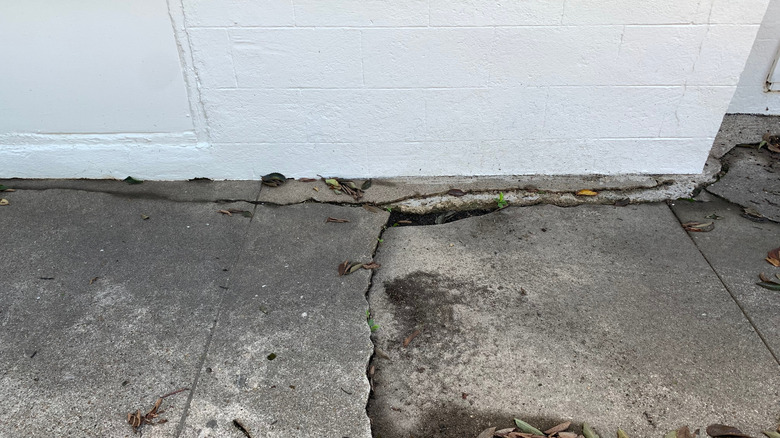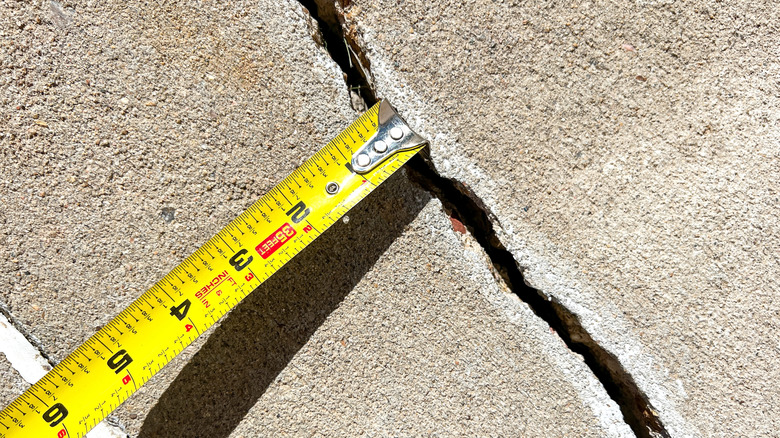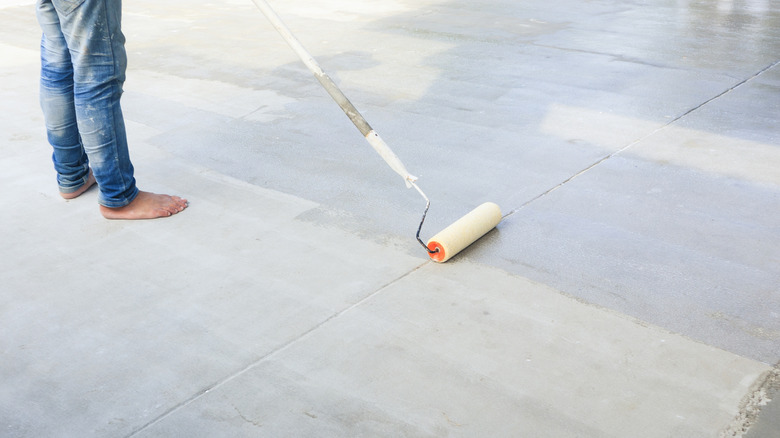The Big Mistake You're Making With A Cracked Concrete Driveway
If you are building a new driveway at your home, you'll want to pick the best concrete for your driveway to ensure it remains intact and lasts a long time. When you buy an existing home, though, you inherit whatever type of concrete the original builder decided to pour. Unfortunately, this means you could end up with a surface that'll soon show its age with unwanted cracks. As you take steps for repairing these concrete cracks in your driveway, you want to avoid common pitfalls to make sure the job goes smoothly. To help you out, we reached out to Brett Labeka, a Virtual Handyperson Expert at Frontdoor, a home services app and connection to live tradespeople to discuss home care. Avoid the mistakes he points out, and you'll have a better chance at repairing the cracks successfully.
In an exclusive interview with House Digest, Labeka says a big mistake people make when fixing a concrete driveway is placing gravel inside and over the cracks. According to Labeka, this happens due to a lack of knowledge about proper concrete repair methods. People may have gravel readily available, so why not try it? "Gravel is also easy to apply and doesn't require specialized tools. Some may mistakenly believe gravel helps with drainage, not realizing it can worsen the issue by allowing water to penetrate deeper," Labeka told us.
The problem with using gravel to fill concrete cracks
Gravel simply doesn't fill the crack tightly or remain in place the way a concrete filling material would. "Gravel does not provide stability because it doesn't bond with concrete and can easily be displaced by weather, foot traffic, or vehicles," he says. "Additionally, water can seep through the gravel, leading to expansion of cracks during [freeze-thaw] cycles." Because it doesn't fit snugly inside the cracks, gravel can't stop dirt from blowing or dropping into the crevices, either. Once dirt gets inside, it will be "encouraging weed growth that can further damage the driveway," Labeka says.
That said, gravel is an appropriate solution in certain unusual circumstances, Labeka told House Digest exclusively. "It can serve as a temporary fix for large cracks over an inch wide, reducing the amount of concrete filler needed," he says. "It may also act as a base for permanent repairs or when preparing to pour a new concrete slab. In cases where cracks occur along the edges of a driveway, gravel can help reduce soil erosion and manage water runoff." For most people looking to repair concrete driveway cracks, though, these circumstances don't apply. It's better to focus on the correct methods for fixing these cracks or to hire a professional for help.
The right way to fix cracks in a concrete driveway
Instead of adding gravel to any driveway cracks you have, Labeka says you should focus on removing any debris inside the area — including gravel. Keeping all debris away from the concrete cracks is key to repairing the defects. After removing dust and gravel from the edges, "using a weather-resistant concrete crack filler or caulk designed specifically for driveways is the best approach," Labeka told House Digest exclusively. "Once the repair is complete, sealing the driveway can help prevent further cracking and protect it from water damage."
Whether you repair the concrete yourself or call the pros depends on your budget and the severity of the issue. The cost to fix a cracked concrete driveway can range from $100 to $1,000 when you hire a pro. Meanwhile, filling the cracks yourself should cost about 15 cents per linear foot. To reduce repair costs, fix small crevices yourself early — and keep gravel out of them. Making repairs right away will prevent water from entering the cracks and subjecting the driveway to freeze-thaw cycles that makes the cracks larger.
However, Labeka says that certain types of concrete repairs are best left to a professional. "Wide or deep cracks may require specialized techniques to ensure stability, particularly if structural issues are present," he says. "Expanding cracks, signs of soil erosion, or drainage problems may also indicate the need for expert intervention."


